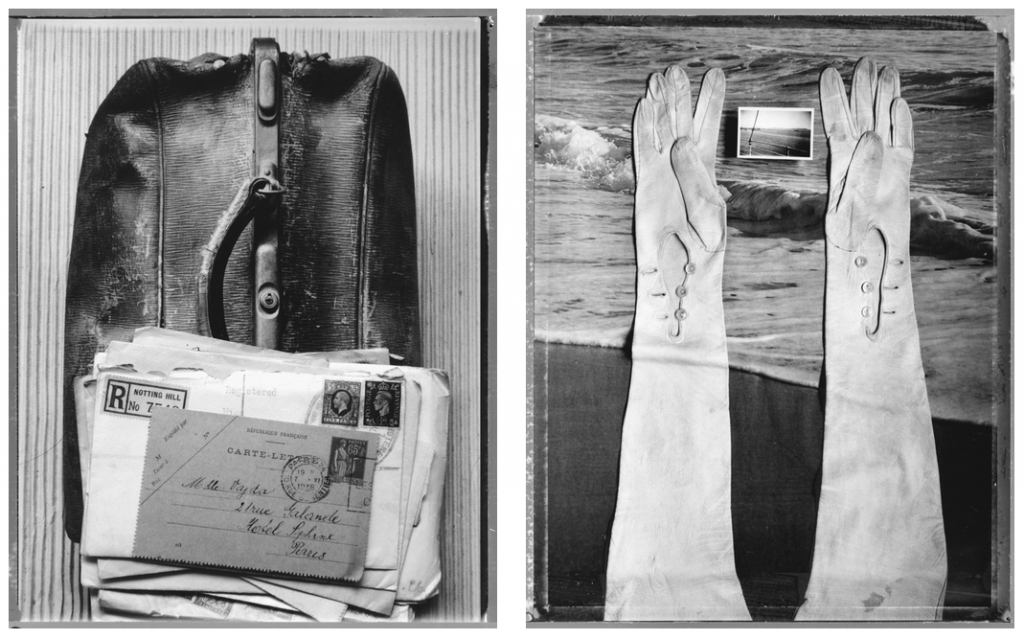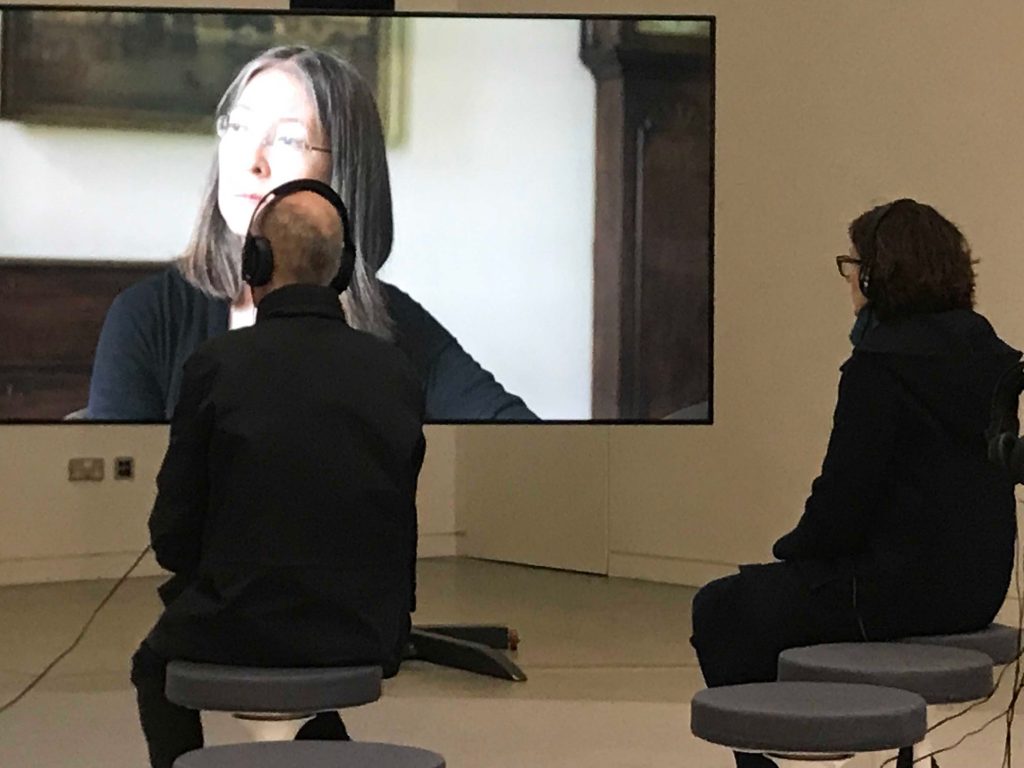Whilst photography must, in essence, directly address time (in the moment of capture, for instance) and space (in, for instance, the locatedness of the making of the image), addressing the passage of time and spatial difference has been a challenge, without sliding into other forms of (re)presentation (video, for instance). The most obvious strategy is juxtaposition, the bringing together of two or more images that signify difference or transition (in time or space, or perspective, identity, experience or any other differentiating dimension). As Baetens et al (2010) observe ‘Time and space are the yin and yang of photography’ and that ‘The more you press on space, the more the notion of time will return with a vengeance-and vice versa’ (p.vii).
The use of juxtaposition and the layering of photographic images to convey, and disrupt, a sense of time is exemplified by the two 1931 photobooks of Moshe Raviv-Vorobeichic, Wilna and Paris, the latter with an introduction by the Futurist painter Fernand Leger (the Futurists, of course, had a fundamental interest in the representation of movement and the passing of time in the visual arts, including sculpture, painting and photography) . Vorobeichic studied at the Bauhaus, and, in particular, the montages of Paris display the dynamic exploration of relationships, and contradictions, of the modern 20th Century city.
‘The flashlike acts of connecting elements not obviously belonging together. Their constructive relationships, unnoticed before, produce the new result. If the same methodology were used generally in all fields we would have the key to our age – seeing everything in relationship‘. (Moholy-Nagy, L, 1947: 68)

The form taken by Vorobeichic’s Paris montages also meets the challenge issued by Sergei Eisenstein:
‘montage is not an idea composed of successive shots stuck together but an idea that DERIVES from the collision between two shots that are independent of one another …each sequential element is arrayed, not next to the one it follows, but on top of it’ (Eisenstein, 1988a: 163-164).
These aspects of Vorobeichic’s work are explored by Nelson (2010). The conception of time in this analysis is strongly influenced by the historical materialism of the Frankfurt School critical theorists, and in particular the writing of Walter Benjamin. Contemporary photographic artists, such as Mari Mahr, continue to work with similar forms of montage and juxtaposition, but extending this to include artifacts and photographs as artifacts (see also earlier post about Peter Kennard’s political photomontage work).

Forbes and McGrath (no date: 2) state that:
‘Mahr’s photographs join the past and the present , the personal and the historical. They might be thought of as ‘”sendings” (envois), which never reach their final destination or reunite with the object or idea they represent (Jacques Derrida cited in Jay, 1993)’.
Whilst I am also attempting to engage with challenge of incorporating a sense of time in my work, I am doing so in the context of contemporary scientific notions of time and a re-configuring of the humanities and social sciences in post-humanist theory (see Hayles, 2018, for an exploration of the relationship between contemporary science and humanities, and in particular the influence of notions of chaos). A key characteristic of current theories of time in physics is that they depart dramatically from our common sense notions and human experience of time. This is explored by Grace Weir in her installation Time Tries All Things at the Institute of Physics in London.

This is a dual channel video work, with accompanying sculpture, in which two theoretical physicists explore contrasting ways in which general relativity and quantum theory can be brought together in understanding spacetime (a term which reinforces the assertion that, in contemporary physics, no conceptual distinction can be made between space and time).
Dowker (2019), in the exhibition catalogue, states that:
‘On the subject of “time”, however, there is not consensus on whether our perceptions can be coordinated with our current best scientific world view. We perceive time passing and make sense of our lives within the context of a fixed past that has happened and an open future that hasn’t happened yet. But the dominant view amongst theoretical physicists is that the Universe is a Block in which the future already exists and time doesn’t pass.’ [no page]
She adds that to seek alternative ways of thinking about spacetime ‘requires new thinking along lines we probably can’t foresee. How do we break out of old ways of thinking and create new knowledge that yet remains disciplined by and true to all that we already know? We need to understand our current best theories , General Relativity and quantum theory, as well as we can … We can also look to art, music and literature to inspire and to challenge.’ [no page]
The departure from human perception of time acts to de-centre the human subject in much the same way as post-humanist theory (and, in a more extreme form, object oriented ontology or speculative realism). In my own image making, I want to attempt to subvert an assumed directionality in time. Global development is intertwined but not co-terminal with human development, and tensions between the natural and the built environment, and human activity within these environments, entail interdependency, indeterminancy and precariousness. An appropriate visual strategy has to incorporate this, and should find a way to explore interactions between and within spacetime. If there are layers and juxtapositions of images, these have to interact and influence each other, ether within the image or in the mode of presentation of the work. The mixing of images that I am exploring produces new images in which the different channels interact. The images are complex, and care has to be taken to make them accessible to an audience, both through the construction of the images, and how they are presented (in themselves and alongside other forms of images, media and artifacts). I’ll explore this in another post.
As with other aspects of my development as a photographer, there is a personal dimension to taking this direction. I failed to learn to read at infant school and was a ‘remedial reader’ in junior school (more on this another time). My way into literacy was through Marvel comic books (I had a bike and did paper rounds from the age of 9, getting paid double by the newsagent if I took payment in comics). I read these obsessively, and when I’d started to get the hang of the text, I transferred this obsession to the local library, where I read my way through the junior library, and then at the age of eleven, I moved over to the adult library, and worked my way through using the Dewey decimal system as a guide (in classic autodidact style). The first section, after General Reference, is Philosophy, Psychology and Logic (100-199) so I have a really good grounding in these areas. One particularly influential book was J.B. Priestley’s (1964) dubiously titled Man and Time (115 in the Dewey decimal system), which explored different conceptions of time in science and the arts (my wife bought a copy of this on eBay a few years ago, and strangely it turned out to be from Barking and Dagenham library).

I went to university to study theoretical physics, but dropped out in the first term, and went to work as a kitchen porter and bingo caller before returning to university later to study education with mathematics and psychology.
Two other co-incidences. There is a programme on bingo calling on the radio as I write this. And, as I watched Grace Weir’s video installation, shortly after she walked across the screen, the door opened and she walked into the gallery (only me and one other person there), took some iPhone photos, watched 5 minutes of the film, and left.

References
Baetens, J., Streitberger, A., and Van Gelder, H. (eds). 2010. Time and Photography. Leuven Univeristy Press
Dowker, F. 2019. Becoming. In catalogue to Time Tries All Things, installation by Grace Weir, Institute of Physics, London. 21.01.19-29.03.19. [no page]
Eisenstein, S. 1988. ‘The Fourth Dimension in Cinema (1929)’, in Taylor, R. (ed.) Eisenstein Selected Works, Volume One, Writings 1922-1934. London: BFI Press, pp. 181–194.
Forbes, D. and McGrath. R. [no date]. Mari Mahr. London: Architectural Association. [Available at http://marimahr.com/reviews/index.html]
Hayles, N. K. 2018. Chaos Bound: Orderly Disorder in Contemporary Literature and Science. Ithaca: Cornell University Press.
Jay, M. 1993. Downcast Eyes: The Denigration of Vision in Twentieth Century French Thought. Los Angeles: University of California Press.
Moholy-Nagy, L. 1947. Vision in Motion. Chicago: Paul Theobald.
Nelson, A. 2010. ‘Suspended relationships: the montage photography books of Moshe Raviv Vorobeichic’, in Baetens, J., Streitberger, A., and Van Gelder, H. (eds) Time and Photography. Leuven Univeristy Press, pp. 141–164.
Priestley, J.B. 1964. Man and Time. London: Aldus Books.
Vorobeichic, M.R. 1931. Ein Ghetto in Osten (Wilma). Schaubücher 27. Zurich/Leipzig: Orell Füssli Verlag.
Vorobeichic, M.R [Moi Ver]. 1931. Paris. Paris: Éditions Jean Walter.
